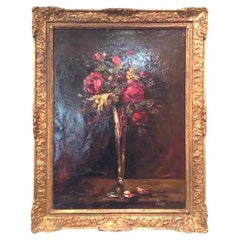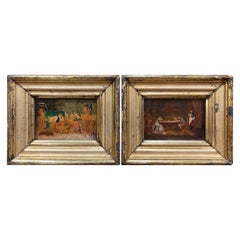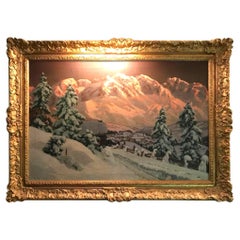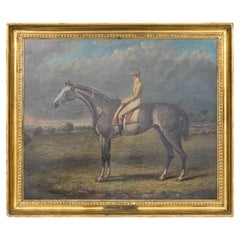Carved Paintings
Mid-20th Century French Mid-Century Modern Carved Paintings
Canvas, Wood, Paint
Early 1900s French Baroque Antique Carved Paintings
Canvas, Paint, Giltwood
Mid-19th Century French Antique Carved Paintings
Giltwood
Early 20th Century Austrian Carved Paintings
Canvas, Giltwood, Wood, Paint
Early 18th Century Italian Louis XIV Antique Carved Paintings
Canvas, Wood
19th Century English Federal Antique Carved Paintings
Canvas, Giltwood, Paint
Late 19th Century Italian Rococo Revival Antique Carved Paintings
Porcelain, Wood
Late 19th Century Italian Baroque Antique Carved Paintings
Giltwood
18th Century European Antique Carved Paintings
Canvas, Wood, Paint
Mid-20th Century American Mid-Century Modern Carved Paintings
Wood, Birch, Teak
Mid-20th Century Puerto Rican Mid-Century Modern Carved Paintings
Giltwood, Wood, Paint
Late 20th Century French Mid-Century Modern Carved Paintings
Canvas, Wood, Paint
Mid-19th Century German Victorian Antique Carved Paintings
Porcelain, Wood
20th Century English Elizabethan Carved Paintings
Canvas, Giltwood, Paint
Late 18th Century Austrian Antique Carved Paintings
Canvas, Wood, Paint
1970s American Vintage Carved Paintings
Wood, Paint
Late 19th Century Spanish Antique Carved Paintings
Giltwood
Early 1900s German Early Victorian Antique Carved Paintings
Wood, Paint
Mid-20th Century French Carved Paintings
Giltwood
19th Century Dutch Romantic Antique Carved Paintings
Canvas, Giltwood, Paint
Late 19th Century Dutch Antique Carved Paintings
Canvas, Wood, Giltwood, Paint
Mid-19th Century French Antique Carved Paintings
Wood, Giltwood, Paint
16th Century German Renaissance Antique Carved Paintings
Wood, Paint
Mid-18th Century Italian Antique Carved Paintings
Canvas, Wood, Paint
Late 19th Century French Country Antique Carved Paintings
Canvas, Giltwood
Late 19th Century French Antique Carved Paintings
Canvas, Walnut
17th Century Italian Renaissance Antique Carved Paintings
Gesso, Canvas, Giltwood
Late 19th Century French Antique Carved Paintings
Canvas, Giltwood
21st Century and Contemporary American Modern Carved Paintings
Acrylic, Wood, Masonite, Paint
Mid-19th Century French Antique Carved Paintings
Textile, Canvas, Wood, Giltwood, Paint
Early 1900s Austrian Folk Art Antique Carved Paintings
Canvas, Giltwood
Mid-18th Century Italian Rococo Antique Carved Paintings
Glass, Giltwood
1970s Italian Vintage Carved Paintings
Gold Leaf
Late 19th Century French Antique Carved Paintings
Porcelain, Giltwood
19th Century German Biedermeier Antique Carved Paintings
Canvas, Hardwood, Paint
Early 20th Century Dutch Carved Paintings
Wood, Giltwood
Late 19th Century Italian Napoleon III Antique Carved Paintings
Canvas, Giltwood
Late 19th Century French Antique Carved Paintings
Giltwood, Glass
Early 20th Century Italian Rococo Carved Paintings
Canvas, Giltwood
Mid-19th Century Italian Antique Carved Paintings
Canvas, Paint, Giltwood
20th Century Mid-Century Modern Carved Paintings
Canvas, Wood
Late 19th Century German American Colonial Antique Carved Paintings
Porcelain, Gesso, Giltwood
19th Century European Antique Carved Paintings
Wood
19th Century French Rococo Antique Carved Paintings
Canvas, Wood
Late 18th Century English Antique Carved Paintings
Canvas, Wood, Paint
Mid-18th Century French Antique Carved Paintings
Giltwood
Mid-20th Century French Carved Paintings
Canvas, Giltwood
Late 19th Century German Antique Carved Paintings
Canvas, Giltwood
Late 19th Century British Victorian Antique Carved Paintings
Paint
1970s American Vintage Carved Paintings
Wood, Paint
Late 19th Century German Renaissance Revival Antique Carved Paintings
Canvas, Wood, Paint
17th Century Belgian Antique Carved Paintings
Oak, Paint
17th Century Italian Renaissance Antique Carved Paintings
Canvas, Plaster, Wood, Giltwood
Late 19th Century French Antique Carved Paintings
Giltwood
1920s Austrian Art Deco Vintage Carved Paintings
Gold
18th Century French Rococo Antique Carved Paintings
Canvas, Wood, Giltwood, Paint
20th Century American Mid-Century Modern Carved Paintings
Wood
Early 20th Century Belgian Romantic Carved Paintings
Canvas, Boxwood, Giltwood
1790s English George III Antique Carved Paintings
Gesso, Canvas, Wood, Giltwood
Late 19th Century American Victorian Antique Carved Paintings
Canvas





